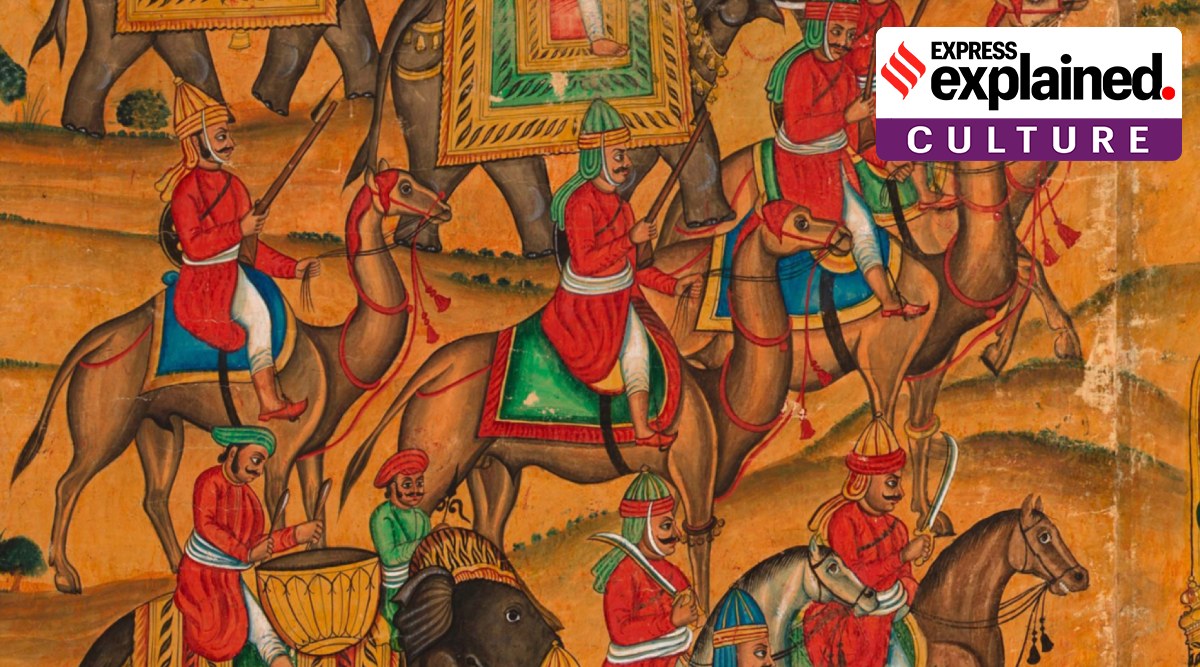Explained: Magnificent painting of Tipu’s battle charge, why is it worth crores?
A work commissioned by Tipu Sultan, the last ruler of Mysore, on the Battle of Pollilur which took place in September 1780 is expected to fetch between £5,00,000 and £8,00,000 at the Sotheby’s auction. What does this painting depict, and why is it significant?
 A painting depicting the Battle of Pollilur. (Source: Sotheby's)
A painting depicting the Battle of Pollilur. (Source: Sotheby's)
Known to be a patron of art, Tipu Sultan commissioned numerous significant paintings. Several of these have come into the limelight in recent years, fetching astronomical sums at auctions. Another work from his treasury will be auctioned at the Sotheby’s “Arts of the Islamic World & India” auction on Wednesday (March 30). Titled ‘The Battle of Pollilur’, the work described by historian William Dalrymple as “one of the great masterpieces of the period” is expected to fetch between £5,00,000 and £8,00,000.
What does the painting depict?
The nearly 32-foot long monumental painting represents the victory of the Mysore army led by Haidar Ali, the ruler of Mysore, and his son Tipu, against the British troops of the East India Company in the Battle of Pollilur, which took place in September 1780. The gouache on paper with black rules shows British soldiers struggling against the Mysore army.
In a note on the work on the Sotheby’s website, Darymple writes, “The painting extends over ten large sheets of paper, nearly thirty-two feet (978.5 cm) long, and focuses in on the moment when the Company’s ammunition tumbril explodes, breaking the British square, while Tipu’s cavalry advances from left and right, “like waves of an angry sea”, according to the contemporary Mughal historian Ghulam Husain Khan. The pink-cheeked and rather effeminate-looking Company troops wait fearfully for the impact of the Mysore charge, as the gallant and thickly mustachioed Mysore lancers close in for the kill.”
What is the significance of the painting?
The work was commissioned by Tipu Sultan, the last ruler of Mysore, as part of a large mural for the newly built Daria Daulat Bagh in Seringapatam in 1784.
Only three such paintings are known to exist. One of them, sold at a Sotheby’s auction in 2010 for £769,250, was reportedly heavily restored, unlike the work on auction now.
The work to come under the hammer now is part of a private collection in the UK, and has been displayed at numerous exhibitions, including a 1990 exhibition in London and a 1999 exhibition in Edinburgh.
What other Tipu Sultan memorabilia have been auctioned in recent years?
In November 2021, one of the eight tiger heads that adorned the throne of Tipu Sultan came for auction at a price of £1.5 million. The UK Department for Digital, Culture, Media and Sport (DCMS) has temporarily blocked its export, saying that the throne finial is closely connected with British history, and hopes that a buyer can be found in the UK.
Items from Tipu Sultan’s armoury were auctioned for around £107,000 in March 2019. It included a silver-mounted 20-bore flintlock gun and bayonet that went under the hammer for £60,000. In the same year, in June, Christie’s sold Tipu Sultan’s “Magic Box” for $495,000.
In 2015, a collection of Tipu’s arms and armour sold at Bonhams Islamic and Indian art sale for a total of more than £6million. The 30 items in the auction come from a single collection.
Newsletter | Click to get the day’s best explainers in your inbox
- 01
- 02
- 03
- 04
- 05





































